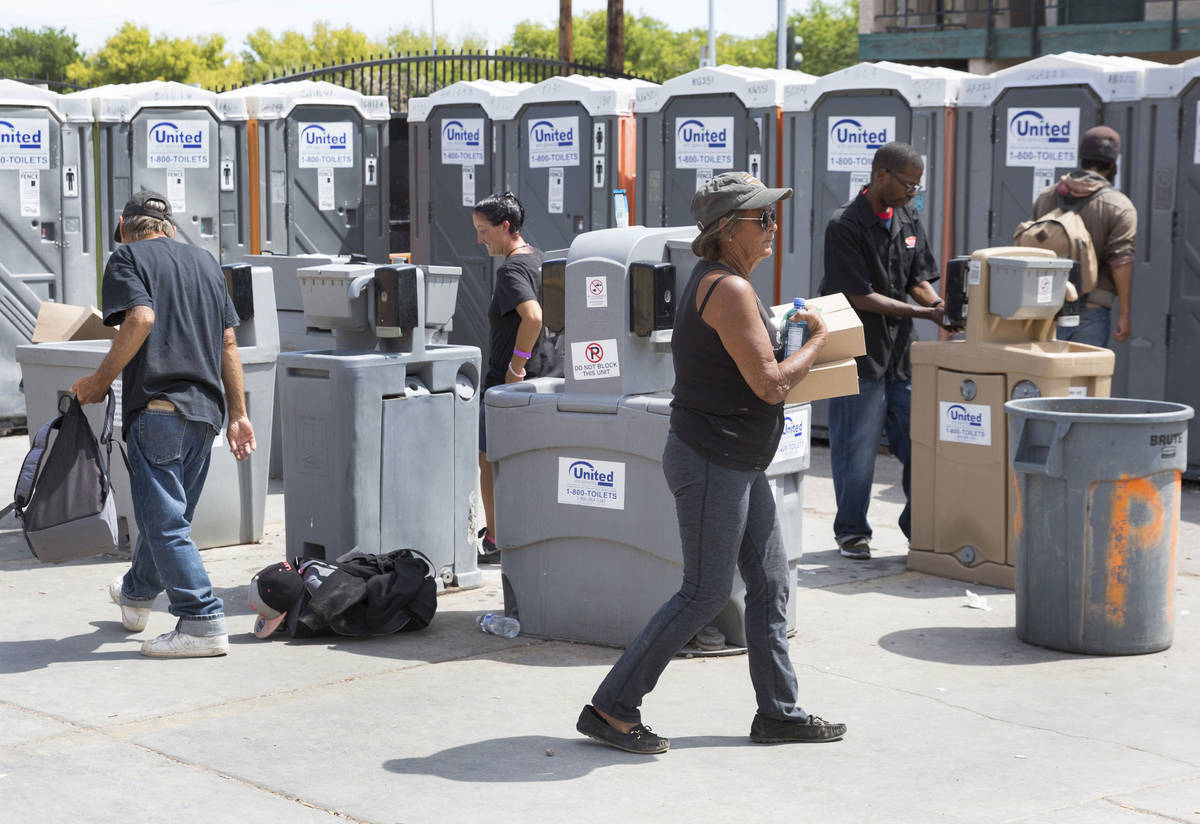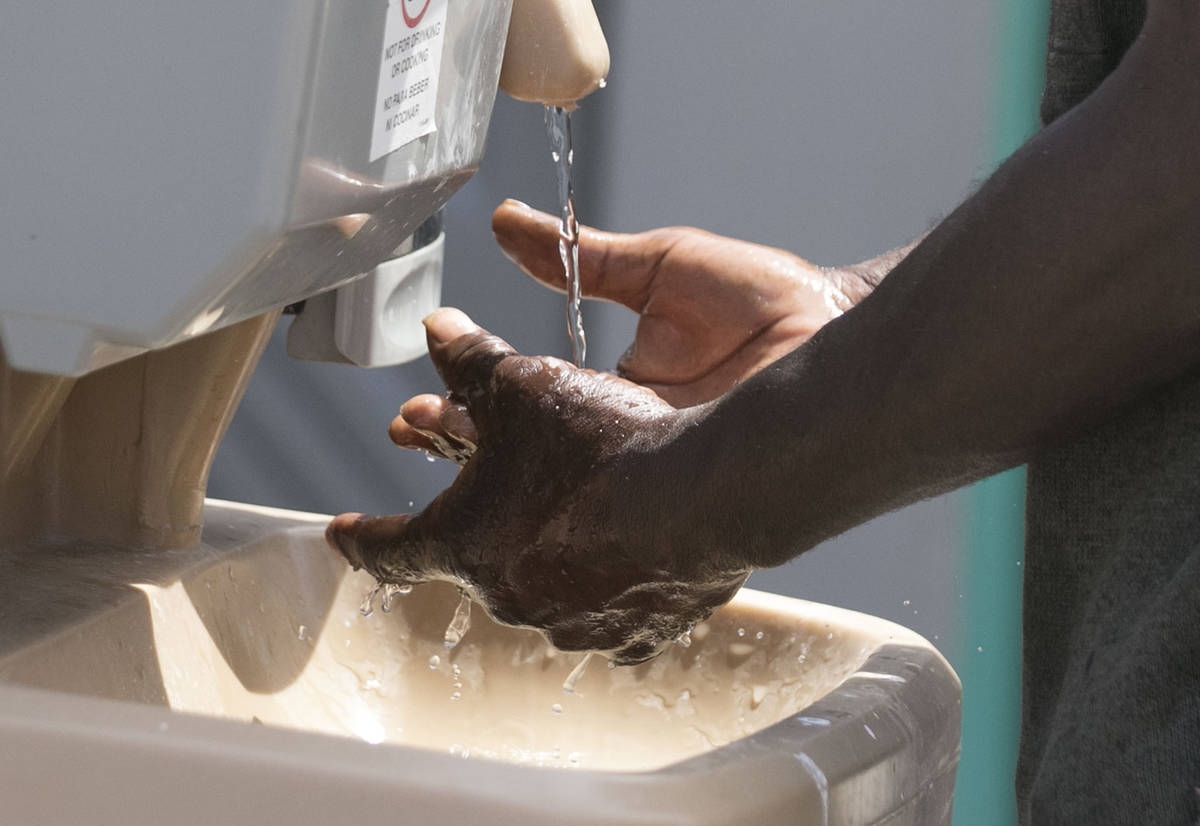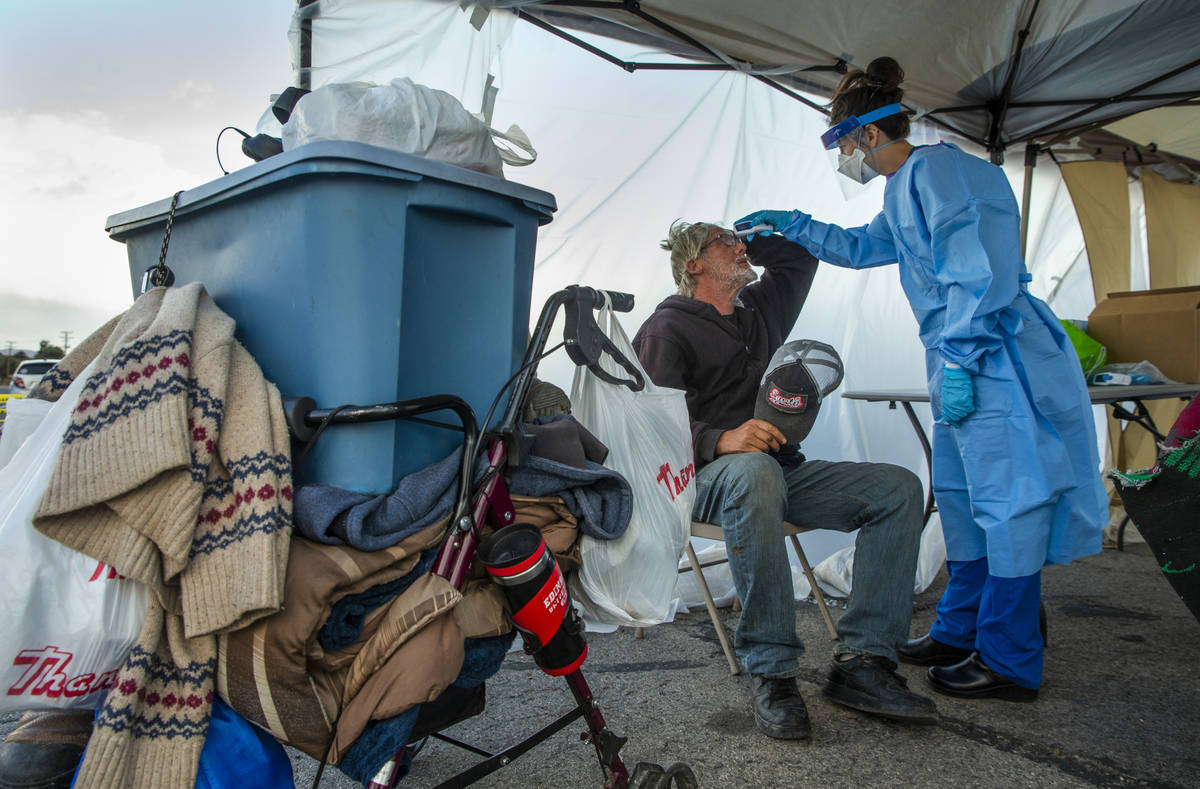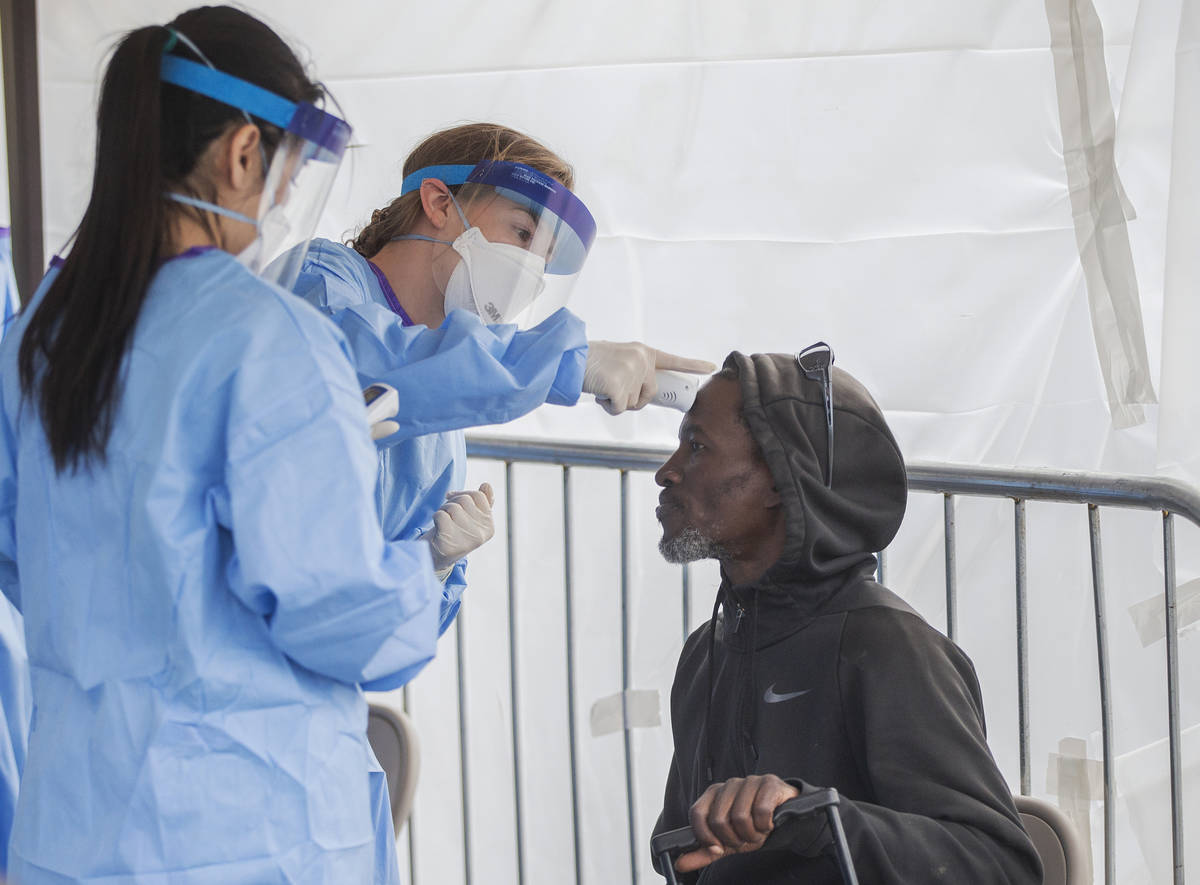Homeless remain a blind spot in Clark County’s COVID-19 picture
by Briana Erickson



While testing for COVID-19 is becoming available to more Clark County residents, testing of the homeless remains haphazard even though they are considered at high risk from the disease.
“We really don’t know what the prevalence of COVID is right now in our homeless population,” Southern Nevada Health District clinical services director JoAnn Rupiper acknowledged in an interview.
“In the last few weeks, we have been determining how we would do that (testing) with our homeless populations.”
One problem is that Clark County’s homeless “were not considered as a high priority” for testing by public health officials when the pandemic arrived in the state in early March, according to emails from Las Vegas officials obtained by the Review-Journal.
Though many homeless have underlying health issues and lack of access to soap and running water, “SNHD had no solutions nor responses for homelessness whatsoever,” Kathi Thomas-Gibson, director of the city’s Office of Community Services, wrote in a March 9 email after meeting with health district officials. “Will continue to look for ways to support the work.”
Rupiper acknowledged that the city had requested help testing the homeless but said that at the time the health district had only 800 testing kits that were reserved for the sickest individuals and their contacts.
Another impediment to testing the homeless is a lack of access to nongovernmental services that are providing testing to the public. A recent drive-thru testing operation at The Orleans was open to anyone, with or without symptoms, if they arrived in a vehicle.
Sharing of data only beginning
Even when homeless individuals were tested, the cities, county and health district were until recently not sharing that information.
“We really need to work better at gathering that data,” Rupiper said.
According to a survey of individual agencies by the Review-Journal, at least 531 homeless individuals have been tested.
The city of Las Vegas, which conducted 442 of those tests, said 20 came back positive for the virus.
That translates to a 4.52 percent infection rate among those tested, lower than the general population’s rate of infection, which stood at 7.4 percent on Friday, according to the state Department of Health and Human Services.
The health district declined to provide the number of positive tests from tests it has conducted. Spokeswoman Stephanie Bethel said that “the health district does not release results related to individual testing events at local facilities.”
Testing of the homeless began to ramp up in late April, when the health district began organizing teams to visit one homeless shelter and one encampment each week. As of Wednesday, it had tested 259 individuals, some of whom were included in the city’s totals.
Rupiper said the strike team approach is similar to one it developed to combat hepatitis A, which last summer produced more cases in the Las Vegas Valley than it had in the previous three years combined. More than 80 percent of those who contracted the disease were homeless.
“It’s not about the number of tests right now; it’s staffing,” Rupiper said. “We got the tests now. Now we have to train the people to do it.”
Tracking the tests
Testing a high percentage of the homeless population would allow district investigators to conduct contact tracing and find so-called “silent spreaders” of COVID-19.
But a Continuum of Care meeting this month showed there is some confusion among officials when it comes to a valleywide system to track the outcomes of testing and subsequent investigations.
When Rupiper stressed the need for officials to create a clearinghouse for “some type of coordinated data regarding testing,” Kristin Cooper, the county’s assistant director of social services, appeared surprised that the health district wasn’t already doing that.
“I sort of made the assumption that SNHD was the one coordinating it, so if that’s not the case, then we probably need to talk about where we could have that coordination sit,” she said. The matter was not resolved by the end of the meeting.
Michele Fuller-Hallauer, Clark County’s social services manager, said the county had hoped to have a lot more tests done by now and is working with the health district to expand targeted testing of the homeless.
“We’re continuing to respond to the COVID-19 crisis, to find folks that are vulnerable based on CDC guidelines,” she said.“And now we’re starting to look toward recovery and what does recovery look like as we move toward the future, while still responding to this unknown virus.”
As of May 10, the Centers for Disease Control and Prevention recommends a “community-wide approach” to COVID-19 among the homeless, which should include a partnership between local and state health departments, outreach teams, housing authorities and other supportive services. Though the federal agency recognizes the homeless as being at higher risk of contracting the disease, it does not specify in its testing guidelines that they should be tested, instead recommending regular monitoring for symptoms.
Problem common elsewhere
Clark County is not unusual as far as having little information on the status of the homeless, said Christopher Herring, a sociologist at the University of California, Berkeley, who co-authored a report last month on public health and homelessness during the coronavirus pandemic.
San Francisco just set up its first walk-up testing site last week, but it had the capability to do so weeks ago, he said.
“This is more of a national failure of not having enough tests from the get-go,” Herring said, adding that Atlanta, Boston, Chicago and New York are the cities that “have done much broader testing” of their homeless populations in shelters. And “Los Angeles is the only city I know that really aggressively got out and started testing unhoused folks camping on the street,” he added.
He said in areas like New York City, where over 90 percent of the homeless are in shelters, testing data might be pretty accurate.
But in many areas, it will never be complete, Herring said, as most hospitals don’t log COVID-19 patients as housed or unhoused when they report cases.
”We’re not going to walk away being able to say, ‘This is the impact of having a large unhoused population during a pandemic; this is the damage that they’ve had versus the people that have had housing,’” he said.
“And if we have a second wave, policymakers aren’t going to be able to have the data to understand to what degree homelessness was a factor in this.”